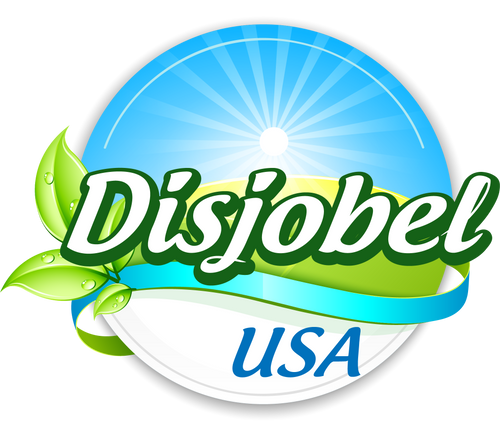Choosing between active dry yeast and instant yeast is essential for achieving the best results in your baking recipes. Therefore, mastering the difference between instant and active dry yeast helps you optimize your processes. Consequently, you obtain products that are always spongy and delicious.
Difference Between Instant and Active Dry Yeast: Characteristics
Although both are forms of dry leavening, they differ in their usage and speed of action. Consequently, knowing these details is crucial. Ultimately, this directly impacts your baking products.
Granule Size
First, active dry leavening has larger granules than instant leavening. Furthermore, instant leavening is ground into finer particles. Also, because of this finer size, instant leavening dissolves and activates faster.
Activation Time and Method
The main difference between instant and active dry yeast is that it requires prior activation. In addition to that:
- Active dry leavening requires rehydration, or "proofing" in warm water before adding it to the dough. This proofing process ensures the yeast is alive before you start to bake.
- In contrast, you can mix instant leavening directly with the dry ingredients without needing to dissolve it.
Difference Between Instant and Active Dry Yeast: How to Use It
To use active dry leavening correctly, performing the rehydration process is vital.
Rehydration Process
To rehydrate it, dissolve it in warm water (between 98°F and 110°F) with a pinch of sugar for about 5 to 10 minutes. Finally, you will know it is ready for your baking when it bubbles. This bubbling signals that the leavening is active.
Ideal Water Temperature
Actually, the liquid's temperature is a critical factor. If the water is too cold, it will slow down the growth. However, if it is too hot, it can kill the leavening.
Advantages of Instant Yeast in the Kitchen
As mentioned, the most obvious benefit of instant leavening is that you can mix it directly with flour and other dry ingredients. Therefore, you avoid the step of dissolving it first, simplifying your process.
Additionally, instant leavening starts faster than active dry leavening. Consequently, if a recipe requires a short rising time, instant leavening helps you save time during Fermentation.
Which Yeast to Choose According to the Recipe?
The choice depends on your time and flavor preferences. Always remember to check the recipe.
Recipes that Prefer Active Dry Yeast
Active dry leavening operates more slowly. This gradual process is perfect for developing a richer flavor and a more artisanal texture in the bread. Because of this, it is ideal for:
- Artisan breads.
- No-knead doughs with long, cold rests
Ideal Recipes for Instant Yeast
In contrast, instant leavening is perfect when you need a quick rise. For example, you can use it in:
- Dinner rolls.
- Quick pizza dough.
- Simple desserts.
FAQ about Difference Between Instant and Active Dry Yeast
We share the most frequently asked questions on the topic:
- Can I substitute active dry yeast for instant yeast? Yes, you can generally substitute them 1:1 by weight or volume. However, you may need to add 15 to 20 minutes of extra Fermentation time. This is required if you use active dry leavening in a recipe calling for instant leavening and it has a short rising time (about one hour).
- What happens if I skip rehydrating the active dry yeast? If you omit the rehydration process, the leavening cells will not fully activate. Therefore, your dough might eventually rise. Yet, the process will be much slower and erratic, affecting your bread's final texture.
- Which has a longer shelf life? In practice, instant leavening usually has a slightly longer shelf life than active dry leavening. This is because it is dried at a lower temperature and ground more finely. Such fine grinding makes the leavening more stable.
Difference between Instant and Active Dry Yeast: Choose the Ideal
Mastering the difference between instant and active dry yeast is essential knowledge. On one side, instant leavening provides speed and convenience, ideal for doughs that need a quick rise. On the other side, active dry leavening allows you to control the process and develop richer flavor profiles during slow fermentation.
Do you always want to bake perfect goods? Discover the variety of leavening products, or learn about baking powder vs. baking soda and other ingredients and topics that Disjobel offers, and take your kitchen to the next level.
References
Deshmukh, R. (2022). Instant Dry Yeast Market Expected to reach $1,273.50 million by 2030 Allied Market Research. Allied Market Research. https://www.alliedmarketresearch.com/press-release/instant-dry-yeast-market.html
Mordor Intelligence. (n.d.). Bakers Yeast Market Size & Share Analysis - Growth Trends & Forecasts (2025 - 2030). https://www.mordorintelligence.com/industry-reports/bakers-yeast-market
Super Charge Your Life. (2023). Different Types of Yeast and How They’re Used to Create Bread, Beer, and More. https://www.superchargedfood.com/news/different-types-of-yeast-and-how-theyre-used-to-create-bread-beer-and-more/





















